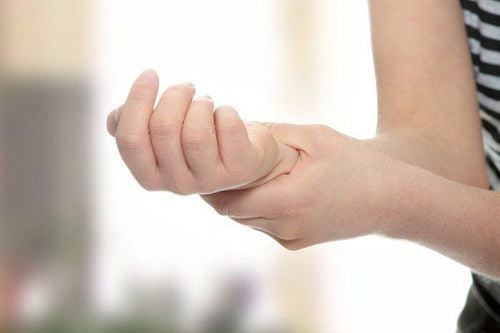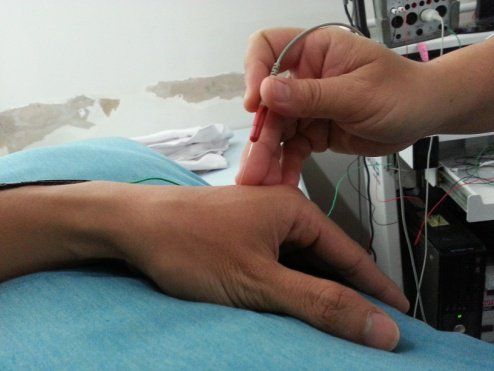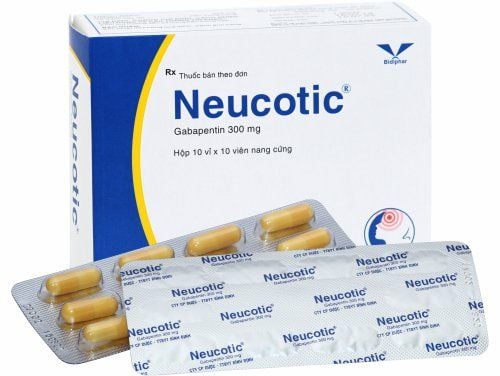This is an automatically translated article.
Peripheral polyneuritis in children usually appears after the patient is infected with Herpes virus, chicken pox, mumps, hepatitis A, B,... If the disease is not detected and treated promptly, it will have a high risk of death from respiratory failure, aspiration or cardiac arrest.1. What is childhood peripheral neuropathy?
Polyneuritis is inflammation and systemic demyelination in peripheral nerves (roots and nerves in the spinal cord and cranial nerves). The disease appears after about 1-3 weeks of infection with Herpes virus, measles, chickenpox, scarlet fever, mumps, hepatitis A, B or Mycoplasma pneumoniae.Normally, peripheral nerves are divided into 2 types: One is covered by myelin sheath and one is not. In particular, the peripheral nerve is covered by a myelin sheath that has a faster nerve impulse conduction speed than the other type.
Normally, when attacked by a virus or bacteria, the body will produce antibodies against these agents. However, when having polyneuritis, the body's antibodies are not against viruses and bacteria but against myelinated nerves, causing the myelin sheaths to be destroyed into fragments. Since then, the speed of nerve impulse conduction is significantly reduced, causing acute peripheral nerve damage.
Polyneuritis is divided into 2 types:
Acute polyneuritis (Guillain Barre syndrome) Chronic polyneuritis and polyneuritis. This is a neurological emergency, if not detected and treated promptly, there is a high risk of death from respiratory failure, pulmonary aspiration due to swallowing dysfunction or possibly cardiac arrest due to nerve damage. dominate the heart. However, when the dangerous stage is over, most cases recover completely after 6 months - 1 year and rarely relapse for a second time. However, about 10% of cases leave sequelae. about movement or sensation.

Sau khi mắc sởi, bệnh xuất hiện sau đó khoảng 1-3 tuần
2. Overview of acute and chronic polyneuritis
2.1 Acute polyneuritis The disease is usually detected in children over 4 years old, the incidence of male and female children is similar.Causes of disease
Usually appears after 1-3 weeks of infection with Herpes virus, chicken pox, measles, scarlet fever, mumps... Appears after vaccination or surgery. Symptoms
50% of cases with pain sensation, paresthesias in the extremities, weakness of muscle groups Sudden paralysis of 2 lower extremities, symmetric paralysis, paralysis of the distal extremities more than the base of the extremities, in some cases uniform paralysis. Paralysis can spread to the upper 2 limbs, paralysis of cranial nerves IX, X, XI,... 10% of flaccid paralysis is severe, respiratory muscle paralysis, need respiratory support Difficulty swallowing, difficulty breathing, confusion circulatory disturbances, arrhythmias, hypertension or hypotension. Assess degree of paralysis
Grade 0: normal motor function Grade 1: Minimal symptoms of injury Grade 2 - 3: Weak walking, weak movement, need help Grade 4: Paralysis, lying down or sitting Localized Grade 5: Motor paralysis, respiratory muscle paralysis requiring respiratory support Grade 6: Death Disease progression
Acute polyradial and neuropathic disease progresses through 3 stages based on motor damage
Acute phase: Lasts about 2-15 days from initial symptoms to maximal paralysis Continuous phase: Lasts 7-15 days from maximal motor paralysis until signs of recovery Recovery phase Treatment
Closely monitor respiratory function, if respiratory muscle paralysis needs to be transferred to intensive treatment mechanical ventilation Use Gamma globulin 1g/kg/day x 2 days. Total dose 2g/kg body weight; or Solumedrol 10mg/kg x 5 days with vitamins of group B: B1, B6, B12

Sử dụng vitamin nhóm B cùng với các thuốc đặc trị
Symptoms
Sensory disturbances in the legs, pain Sudden weakness in the legs, weakness in the extremities Treatment
Use Prednisolone 1-2 mg/kg/day, treat every other day when the clinical manifestations improve. The dose of the drug is gradually reduced by 0.5mg/kg every other day for 6 months after recovering from the disease.
3. Precautions
To prevent peripheral neuropathy, parents should refer to the following suggestions:Strengthen children's resistance because children with good health rarely get this disease Take children to get vaccinated full coverage of vaccines included in the expanded immunization program. If possible, children should be vaccinated against many other diseases

Tiêm phòng đầy đủ cho trẻ là biện pháp phòng ngừa hữu hiệu nhất
Please dial HOTLINE for more information or register for an appointment HERE. Download MyVinmec app to make appointments faster and to manage your bookings easily.













